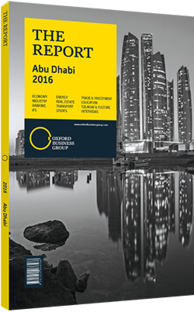New insurance regulations lead to consolidation in the UAE insurance market
In a bid to strengthen the insurance sector and promote industry consolidation, the UAE Insurance Authority (IA) recently introduced new financial regulations for underwriters, aimed at improving solvency, technical provisions and accounting practices, and setting new investment and minimum capital requirements. These reforms will bring the sector further in line with international standards.
Reform Process
On December 28, 2014 the IA announced it had finished a three-year review of comprehensive new financial regulations, known as the Draft Combined Regulations, which apply to both traditional and takaful (sharia-compliant) companies. The regulations were gazetted on January 28, 2015, and came into effect the following day.
The regulations set out the requirements related to investment limits, capital, solvency, technical provisions, record keeping and accounting. The move was hailed as a significant step forward in developing the local market, as well as strengthening consumer and shareholder protection. The rules are also expected to push smaller companies towards consolidation or acquisition. “One of the key focus areas for the IA is to encourage companies to adopt sound financial policies by requiring them to have certain levels of technical provisions and reserves,” Ebrahim Al Zaabi, director-general of the IA, told OBG.
New Standards
Although minimum capital requirements will remain at Dh100m ($27.7m) for insurers and Dh250m ($68.1m) for reinsurers, the financial regulations require that insurers maintain a minimum guarantee fund not less than a third of their solvency capital requirement and that they calculate solvency margins using the IA’s amended template, which was released in September 2015. Companies are required to take underwriting, investment, credit and operational risks into account when calculating their solvency capital requirement. Companies have been given until January 29, 2018 to bring the changes into effect, and are required to notify the IA in the event of non-compliance, putting the UAE’s insurance industry broadly in line with proposals introduced under Europe’s Solvency II Directive.
Asset Diversification
The new rules also stipulate that insurers ensure their assets are both diversified and in compliance with the new limits with regards to aggregate exposures in individual asset classes, as well as setting sub-limits for exposure to a single counterparty. Companies’ investment limits for equity instruments in listed and non-listed UAE companies are now set at 30%, and a maximum of 10% in any single stock, fund or instrument. The IA has also introduced a 20% cap of the insurer’s funds for foreign equity investments, with a maximum 10% exposure to a single counterparty. Maximum exposure to the real estate sector was also capped at 30%. Insurers are permitted to allocate up to 100% of funds in government securities, or any instrument issued by any emirate, although a 25% cap has been set on any one such security or instrument.
Insurers are also required to establish a board-level investment committee with its own charter, investment policy and guidelines, approved by its board of directors. Reforms also mandate insurers to appoint an actuary who is registered with the IA to review and approve the company’s technical provisions. Insurers must submit quarterly reports to the IA. The move is expected to help further strengthen and consolidate the sector, with ratings agency Standard & Poor’s reporting in 2015 it expects smaller firms will struggle to cover rising compliance costs. However, concerns remain over the ability of the IA to enforce the new provisions. “Compliance at all levels is critical. Every company will say they’re complying, but to ensure that this is actually the case, enforcement needs to be happening. This is an area where I think there is certainly room for improvement,” Rasha Moukayed, chief operating officer at Guardian Insurance, told OBG.
You have reached the limit of premium articles you can view for free.
Choose from the options below to purchase print or digital editions of our Reports. You can also purchase a website subscription giving you unlimited access to all of our Reports online for 12 months.
If you have already purchased this Report or have a website subscription, please login to continue.

